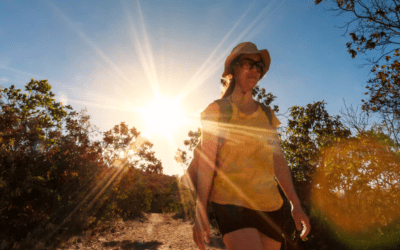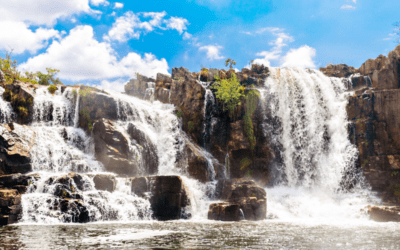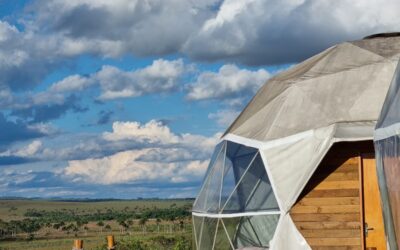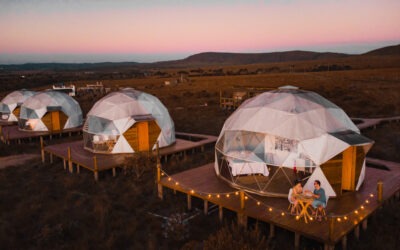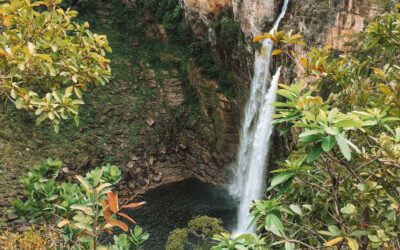The Brazilian Cerrado represents about 22% of the national territory and is the second largest biome in the country. With wide biological diversity, the ecosystem is located mainly in the Central Plateau region. It is also characterized as the tropical savannah of South America.
The Cerrado is an inverted forest

We can define the Cerrado as a region of savannah, seasonal forest and countryside. With striking and specific characteristics for its fauna and flora, which in addition to being beautiful and rare, have an important function
The Cerrado is considered an inverted forest, as the roots are deep, much larger than the crowns. These roots are responsible for collecting rainwater and storing it in aquifers (underground reserves).
In this way, these aquifers supply water to six of the eight large Brazilian hydrographic basins: Amazon, Araguaia/Tocantins, North/Northeast Atlantic, São Francisco, East Atlantic and Paraná/Paraguay, also including the water that flows into the Pantanal.
Much of the water from springs, rivers and aquifers in the Cerrado is related to agricultural production and the country’s energy production through hydroelectric power plants.
Endangered Brazilian Cerrado
The Brazilian Cerrado is today the second region that most feels the consequences of human habitation, as well as the Atlantic Forest. In the last 30 years, with the expansion of the agricultural frontier, the Cerrado was the most devastated biome in Brazil. Therefore animals and plants are threatened or at risk of extinction. The vast majority of species are unprotected, both by the law and by the disregard of the human being. It is estimated that more than 339 species of animals that inhabit the Cerrado are in this condition.
This destruction comes at a high price: many springs and water courses are being silted up, so many basins are losing their water potential. This loss does not only affect the Central Plateau region, but 88.6 million Brazilians, as well as neighboring countries that depend on these basins.
Where is the Cerrado?
The Cerrado covers part of northeastern Paraguay and eastern Bolivia and much of the Midwest region of Brazil. Therefore, the Brazilian Cerrado is found in the states of Goiás, Mato Grosso, Mato Grosso do Sul, Tocantins, Minas Gerais, Piauí, Bahia, Maranhão, Rondônia, Paraná, São Paulo and the Federal District. It also has enclaves in Amapá, Amazonas and Roraima where the three sources of the largest hydrographic basins in South America are located.
What is the importance of the Brazilian Cerrado
The Cerrado is essential to maintain the perfect balance of nature, in addition to guaranteeing our country’s water supply, it is also indispensable for the local fauna and flora that bring life and charm to nature, whether through plants or animals. Therefore, the importance of preserving the Cerrado is literally a matter of life.
What is the weather like in the Brazilian Cerrado?
The climate in the Cerrado is seasonal tropical most of the time. Therefore, it has dry winters and rainy summers. The temperature is usually 25ºC on average during the year. In spring, thermometers can reach up to 40º C. The dry period lasts from May to October, and during the months of November to April, the rainy season predominates, when temperatures vary around 22ºC. Even so, the sun can predominate for most of the day.
Discover amazing places in the Brazilian Cerrado

- Chapada dos Veadeiros
Chapada dos Veadeiros is one of the paradises of the Brazilian cerrado located in the state of Goiás. With hundreds of waterfalls with crystal clear waters, the place is perfect to renew your energies and reconnect with nature. Undoubtedly, the ideal place to escape the daily routine. In addition, the place is considered magical by the most mystics. An oasis for the most spiritual. Nothing like relieving stress with a waterfall bath and a well-deserved rest. Is not it? Therefore, be sure to discover the best destinations in Chapada dos Veadeiros!
- Jalapão
Located in the state of Tocantins, Jalapão receives tourists from all over the world. In addition, the destination is known by lovers of ecotourism and adventure tourism. The place has amazing sand dunes and incredible fervedouros, as well as breathtaking waterfalls.
The two largest conservation units in the Cerrado are located in the Jalapão Region: the Serra Geral do Tocantins Ecological Station and the Nascentes do Parnaíba National Park, each with more than 700,000 hectares in extension.
